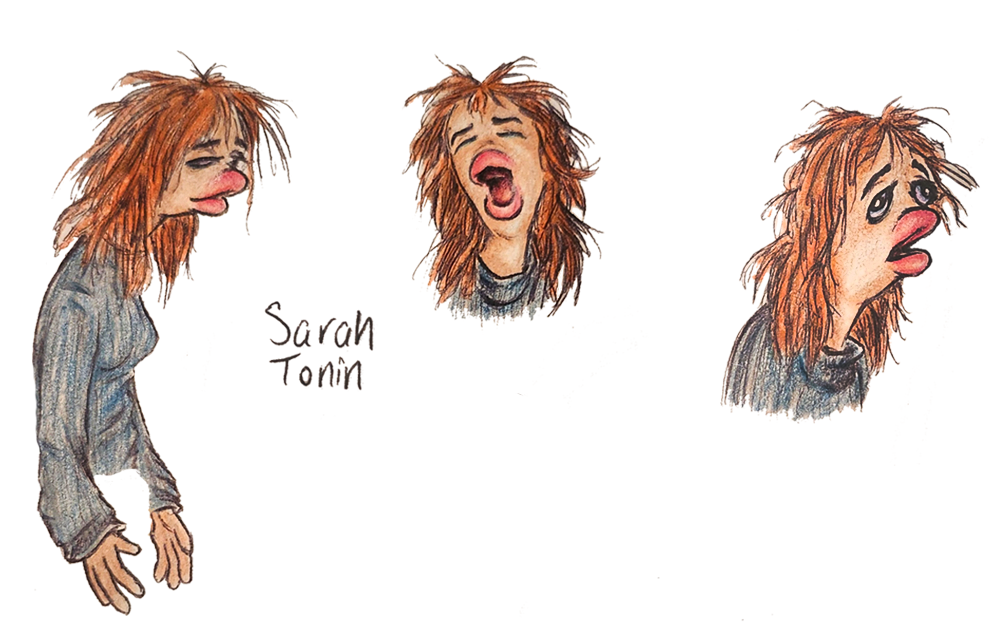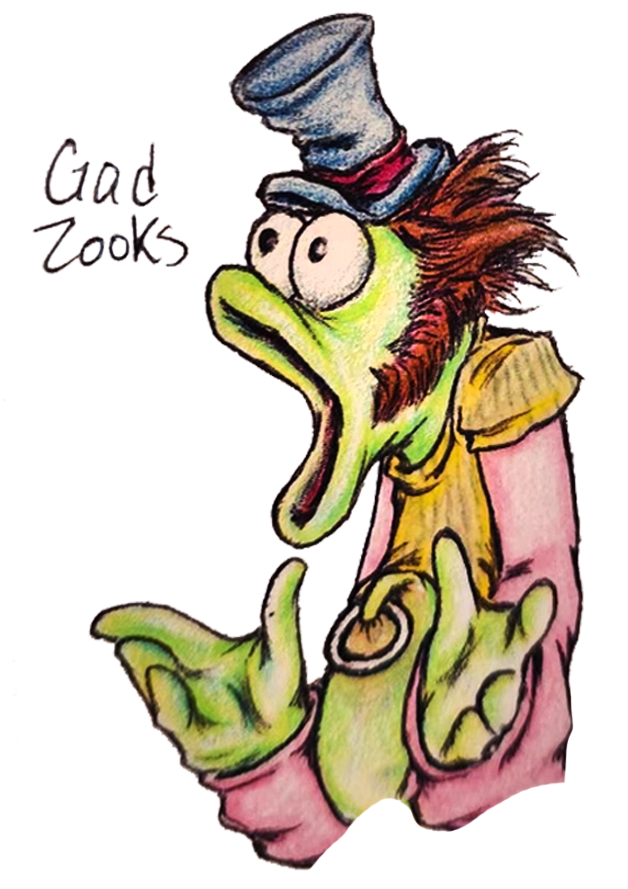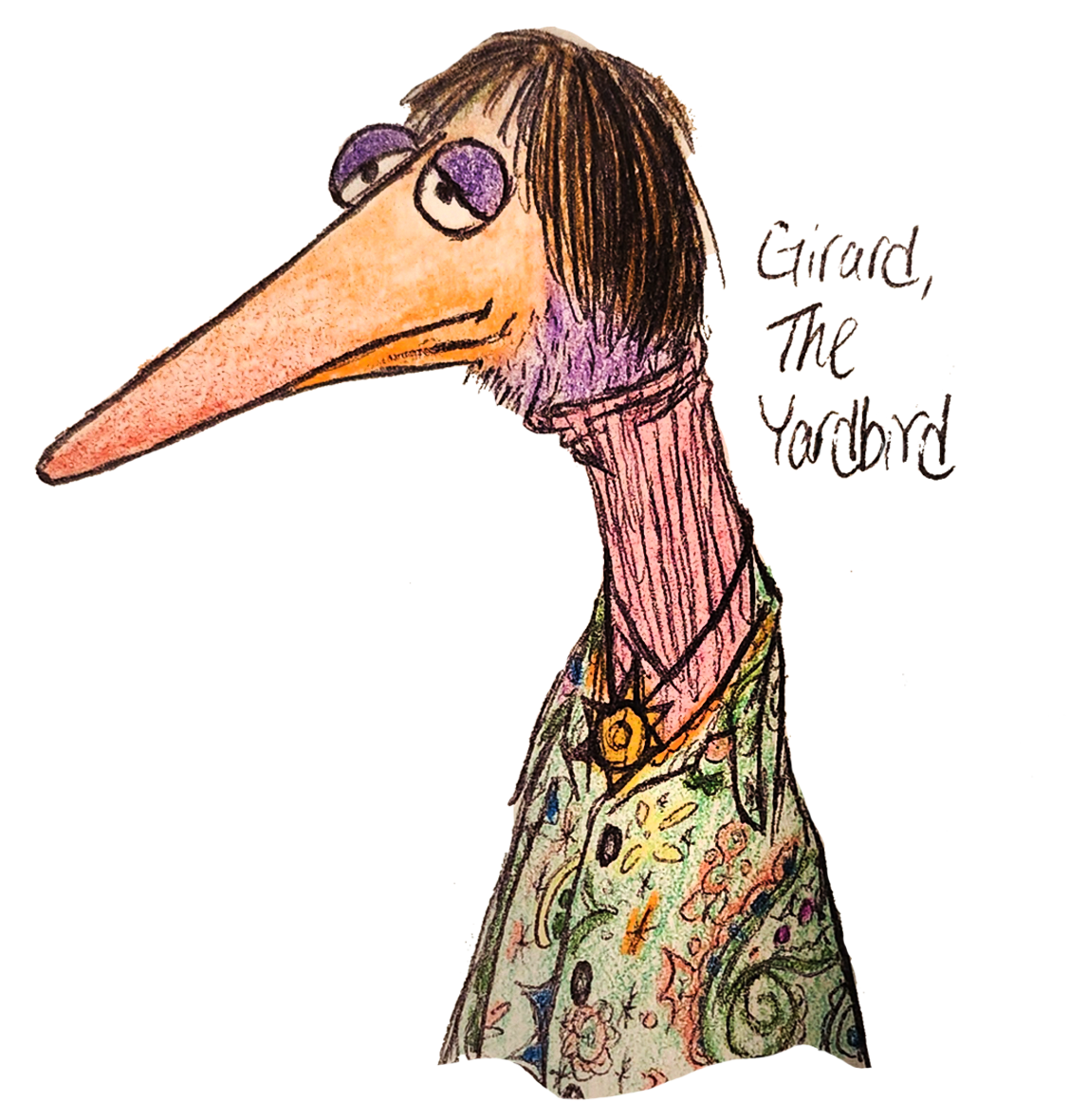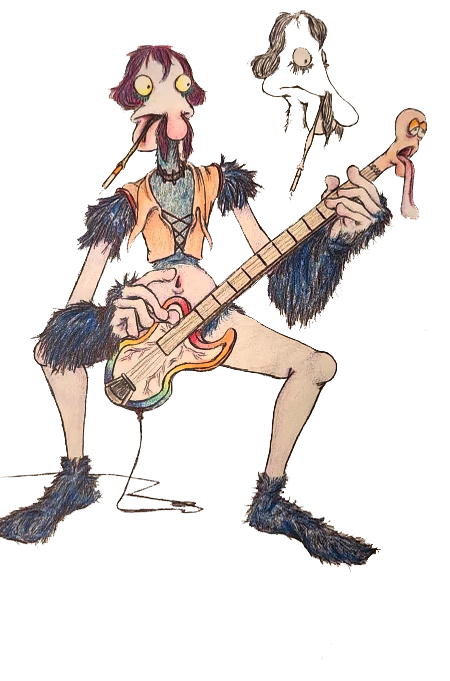The Puppeteer of Bay Ridge
Photographed by Paris Benson
Written by Sarah Allen
Sketches and Puppets by Tau Bennett

Laughter is an act of human vulnerability: the head leans back, the mouth opens, and the throat is exposed. In this state of openness, we offer the possibility of trust and connection. And it is the art of puppetry that seems to exhibit, at its core, an invitation to laugh through the surrendering of one’s inhibitions.
We weren’t expecting to laugh quite as much as we did the day we first met 24-year-old puppeteer Tau Bennett in his Bay Ridge, Brooklyn apartment. It can be difficult, especially amid the nebulous descent into adulthood, to let go of your ego enough to truly let go and ‘play.’ But Tau’s earnest and unabashed puppet performances soon dissolved any affected pretensions we hoped to put on.
Tau likes to be involved in all sides of the multifaceted art of puppetry. Whether it be sewing the puppets from hand, writing their characters, or performing them, Tau seems driven by the creative play involved in all aspects. His creations seem genuine, open extensions of self, rather than attempts at copying an influencer or a viral trend. His puppetry and his art seems in an entirely different world than that of all-consuming social media - it seems entirely, uniquely, his. After all, the very conceptual process of creating a puppet, Tau says, often involves “taking a flaw within yourself and focusing on that one flaw and amplifying that” to become the personality of the puppet.

Instead of mimicking or copying, Tau’s puppetry is an honest conversation with himself, as well as with the audience. Him and the character of the puppet look to one another to create something new, ad infinitum. The performances pull in the audience, and you can’t help but look on and laugh. Any initial blushes of embarrassment richen into child-like joy, and this kind of play can truly connect people - in the same way that playing board games can strengthen bonds in a strangely oblique way. By stepping out of our pretenses and our pretending, a connection can be - and was - built through shared joy and play.

There is the generally accepted expectation that as one ages, one slowly disconnects from their inner child. But Tau hasn’t; rather, he seems to have sustained and nurtured the dreams and joys of his youth into his adult life. When I asked Tau to tell me ‘how he got here,’ he didn’t have a pre-set narrative. He sat with the question for a moment before responding. He never seemed in a rush when he spoke, giving the sense of having all his life to do what he loves. Perhaps because he’d spent most of his conscious life already doing just that. Though he’s still gathering up the yarns to tell the story of his life, of ‘how he got here,’ Tau has wanted to be a puppeteer for as long as he can remember.
It was the playful act of lip-syncing lines from The Muppets cassette tapes with his family that brought him to love puppetry as a young kid. When he was ten, his family took him to a show by Leslie Carrara-Rudolph, who played Abby Cadabby on Sesame Street.Tau brought a puppet he had made by hand and, sitting in the front row, he reportedly distracted Leslie by reacting to her entire show with his puppet. Leslie pulled him aside at the end of the show, and this catalyzed Tau’s journey into the professional puppetry world. Kevin Clash, known for playing Elmo, had him appear at the end of his documentary, symbolically passing the torch on to Tau.
![]()
From then on, Tau was mentored by Sesame Street, until he was able to legally work there at age 16. His dreams were coming true at a young age, and very quickly. “It was like the thing I wanted to do.” Showing us some of the beaten sketchbooks that were home to the ideas and character concepts he had accrued since childhood, we began to understand the depth and timeline of his passion for puppetry.
Tau’s one-bedroom apartment reflects this multi-faceted embrace of the arts. There is a mingling of different musical instruments in his bedroom, sketchbooks and journals stacked on various surfaces, and several desks for seemingly different purposes: one seems more writerly and sparsely conceptual; the other, lined with a green cutting mat, is laced with remnants of hot glue. On the latter desk are heaps of multi-colored furs, and what looks like a carton of eggs (which we later learned were the hollow white spheres used for puppets’ eyes).
![]()
But the tour de force of Tau’s apartment is the wall of puppets stretching across half the main room. Upon closer inspection, this massive wall of texture and color contains most of the puppets he has made in the past decade and a half (he started making his own puppets when he was ten). It’s a strange sight: the puppet’s long limbs flung askew and their lazy eyes peering out, their mouths hung cavernously open.
We truly got to know Tau when he would pull out a puppet from this stack and perform them for us. With the puppet on his hand, any inhibitions or shyness of the ‘normal’ Tau melted away into the raucous, self-effacing persona of the characters he brought to life. Whether it was the bashful, clumsy ‘Melvin’ or the crudely unfunny ‘Tom Foolery’, Tau shed away any reticence through these absurd extensions of self. The quiet of his apartment soon became crowded with the voices of many.
![]()

From then on, Tau was mentored by Sesame Street, until he was able to legally work there at age 16. His dreams were coming true at a young age, and very quickly. “It was like the thing I wanted to do.” Showing us some of the beaten sketchbooks that were home to the ideas and character concepts he had accrued since childhood, we began to understand the depth and timeline of his passion for puppetry.
Tau’s one-bedroom apartment reflects this multi-faceted embrace of the arts. There is a mingling of different musical instruments in his bedroom, sketchbooks and journals stacked on various surfaces, and several desks for seemingly different purposes: one seems more writerly and sparsely conceptual; the other, lined with a green cutting mat, is laced with remnants of hot glue. On the latter desk are heaps of multi-colored furs, and what looks like a carton of eggs (which we later learned were the hollow white spheres used for puppets’ eyes).

But the tour de force of Tau’s apartment is the wall of puppets stretching across half the main room. Upon closer inspection, this massive wall of texture and color contains most of the puppets he has made in the past decade and a half (he started making his own puppets when he was ten). It’s a strange sight: the puppet’s long limbs flung askew and their lazy eyes peering out, their mouths hung cavernously open.
We truly got to know Tau when he would pull out a puppet from this stack and perform them for us. With the puppet on his hand, any inhibitions or shyness of the ‘normal’ Tau melted away into the raucous, self-effacing persona of the characters he brought to life. Whether it was the bashful, clumsy ‘Melvin’ or the crudely unfunny ‘Tom Foolery’, Tau shed away any reticence through these absurd extensions of self. The quiet of his apartment soon became crowded with the voices of many.


The eager commitment and enthusiasm of his performances were refreshing, and unexpected from a 24-year-old. In a clear statement of anti-apathy, Tau foregoes the too-cool-for-school artist type that has become all too common. In a time when so much art is transactionally received through the isolating barriers of a phone screen, puppetry rejects this notion and instead playfully reaches out towards the audience in live time and space. The performer and the puppet depend on feedback and conversation from the audience, leading to more genuine connection.
The mass production of “art” and its infinite spawning of trends is refreshingly contrasted with the art of Tau’s puppetry - in the physical space of a room, here and now, and soon to be gone. Tau’s art, in this sense, feels quite uniquely resistant. Tau is a rare example of authentic artistry, driven not by the desire to be adored or idolized, but driven by the desire and joy of doing it. His art doesn’t instantly gratify in the form of likes and comments but gratifies on a deeper level through the easy laughter of an audience member and a sense of joyful connection.

He’s doing what makes him, and others, happy. One thing that he’s made that he seems to be particularly happy about is the collaborative puppet television series, Cold Sober. For Tau, the show is “about showing a parallel to what our world is like”, declaring that “even though things could be disturbing in life, you don’t have to let it get you down.” He created it with a bunch of passionate puppeteers that he’s known through the internet for years. A pilot was made in the summer of 2019, in the span of two feverish weeks, fueled by youthful vigor, Dollar Store foam, and the simple joy of playing with friends.
One of the questions within the puppet community is, ‘Why puppets?’ As Tau tells me, puppets are expensive and time-consuming to make. It takes Tau about a month to make just one, from conception to hand-sewing the entire thing together. But Tau is making art for the sake of creating something that brings joy, and that is joyous to create. “Okay, I didn’t have to use [a puppet], but I liked it – I wanted it in this project, and so it serves that purpose.”

The title of his show came from the phrase ‘stone cold sober.’ But Tau’s art is not stone cold sober, not too serious or too cool for school. But there’s something very important about that which is ‘not important.’ Puppetry is an art form that asks nothing of its audience members except to surrender, cracking them open and also cracking them up a bit. Puppetry has nothing against adulthood except the boundaries we’ve boxed the term into. Tau’s art form reminds us to be open to youthful joy, to being here, now, in this room, and laughing.
Of course, not everything in life can be playful and joyful. Sometimes, Tau said, the foam that makes up the inner core of the puppets can disintegrate suddenly, without warning. Puppeteers call this crumbled foam ‘toast,’ and so the often-inevitable destruction of their art is turned into a quippy phrase, making ease of the frustrating event of decline. It is ‘toast’. But they go back and painstakingly refurbish the puppets, bringing them back to life. In the face of inevitable decline, we create again, and we play.